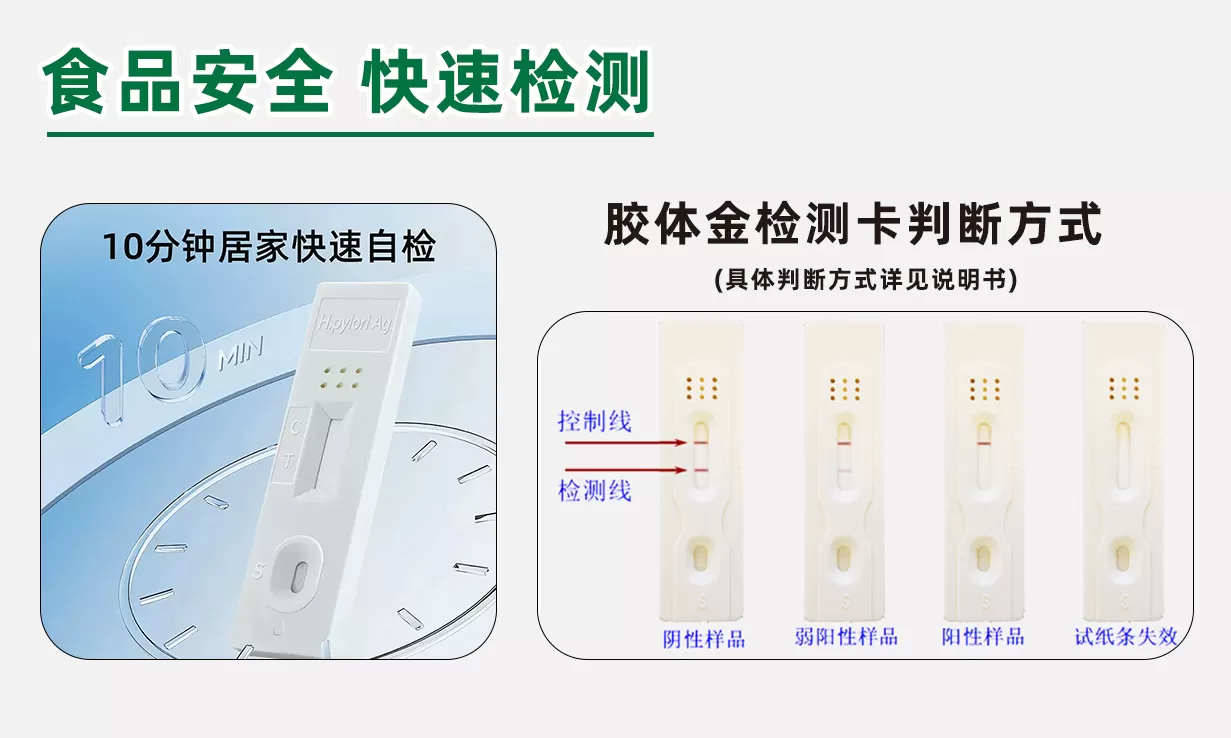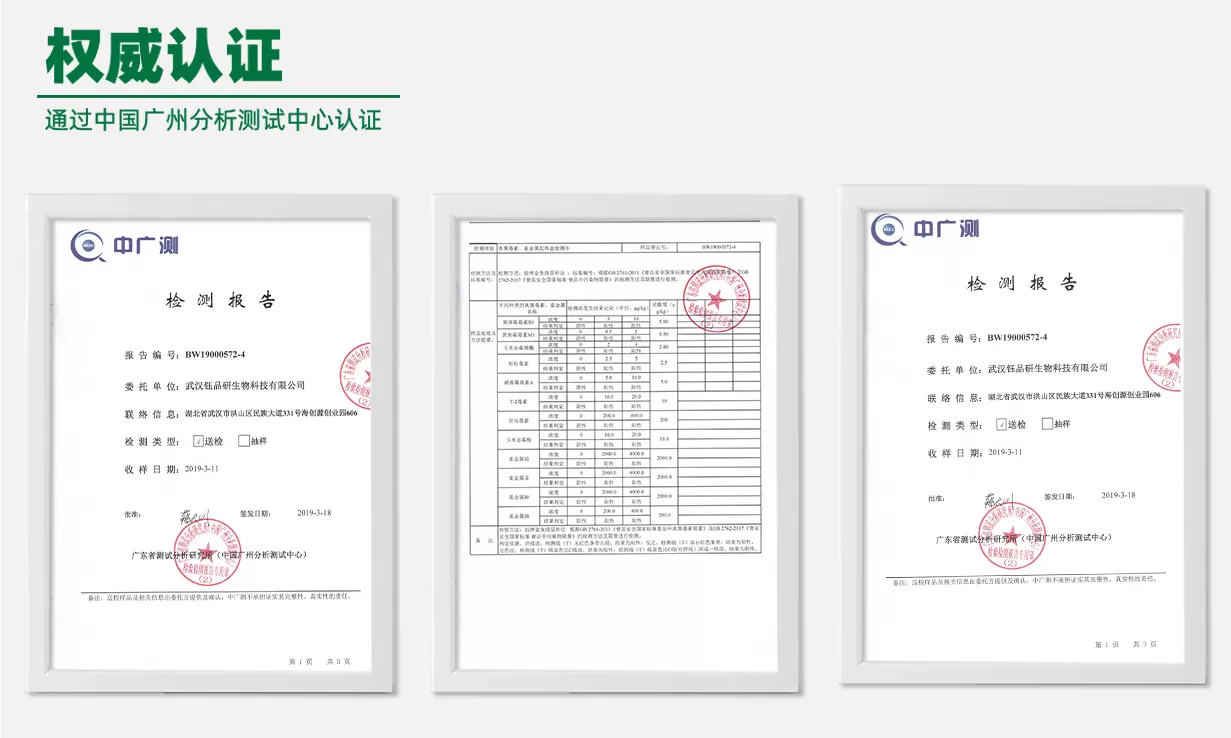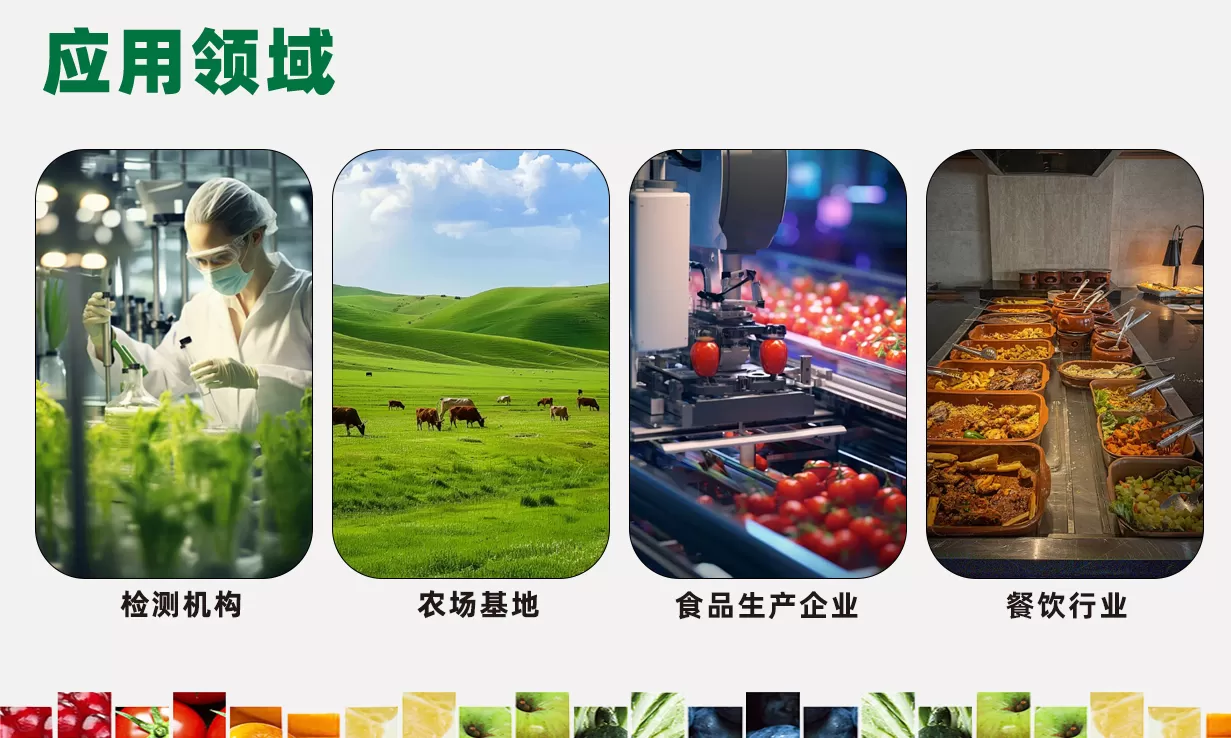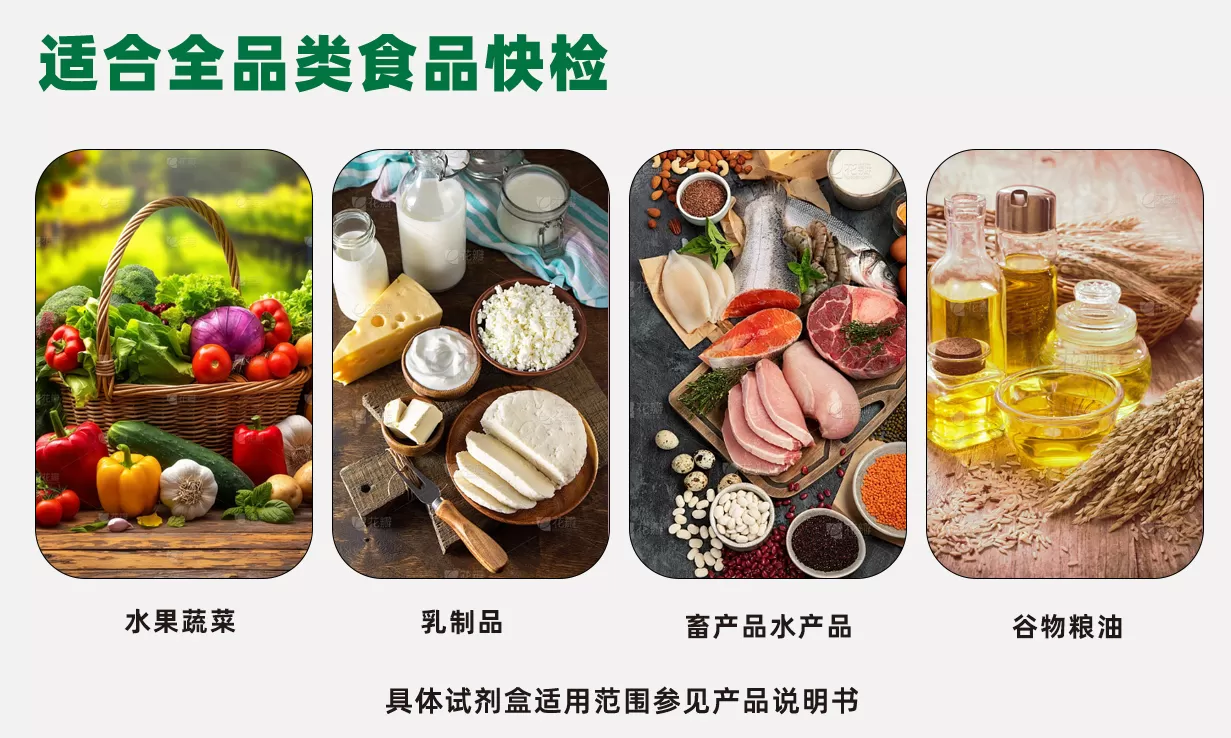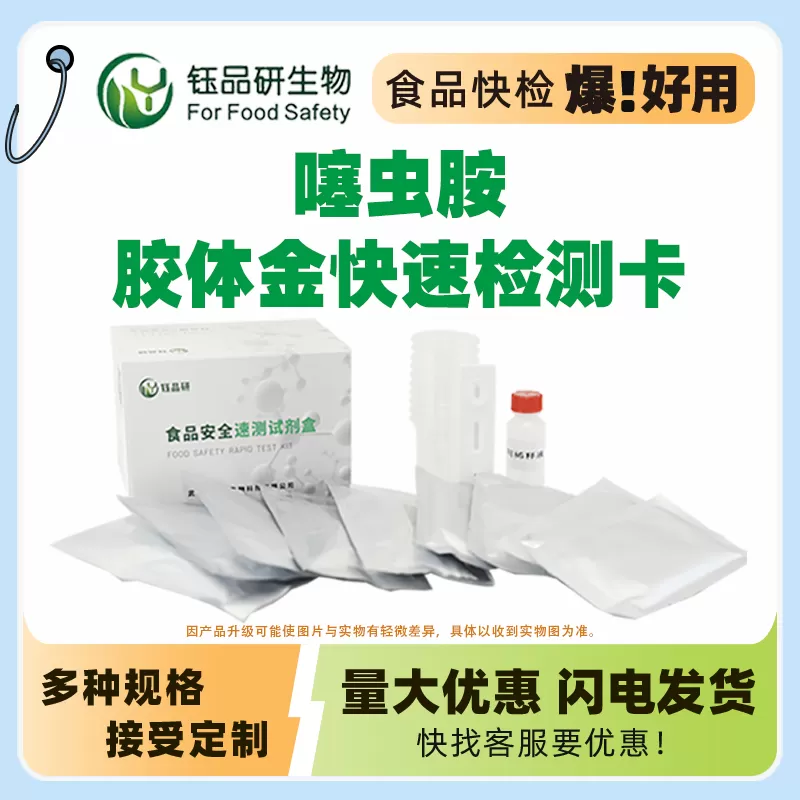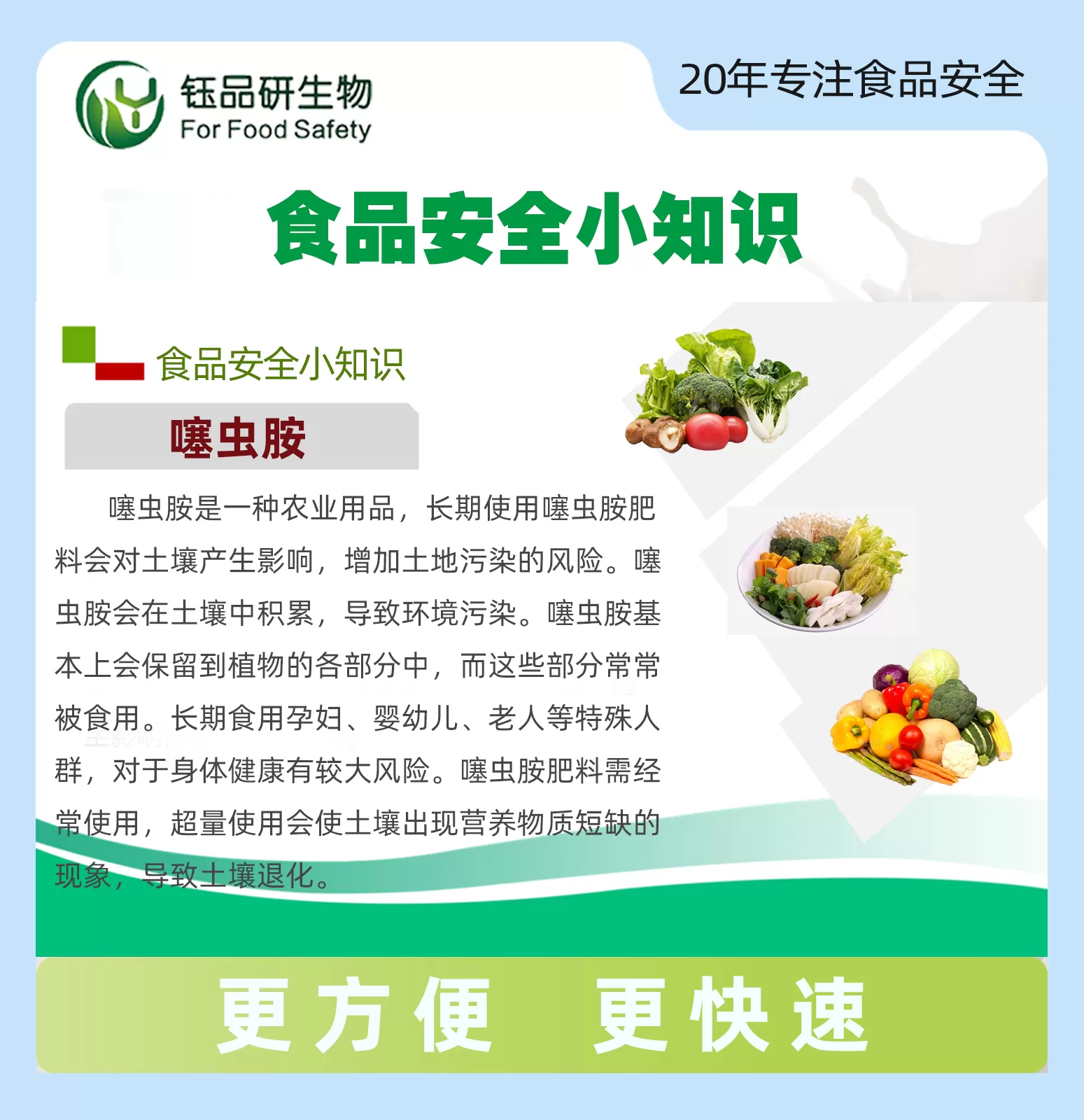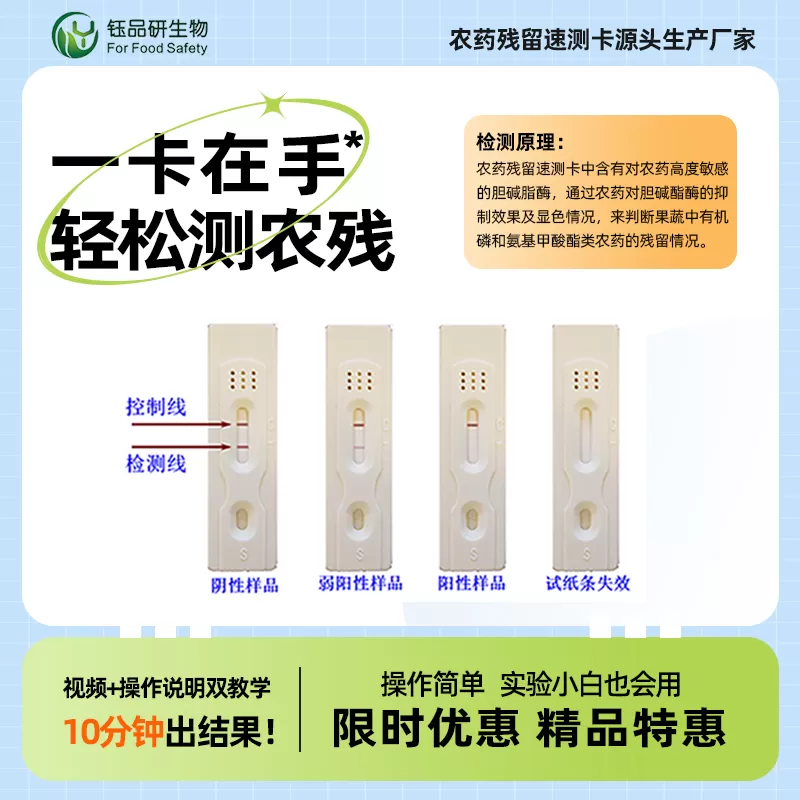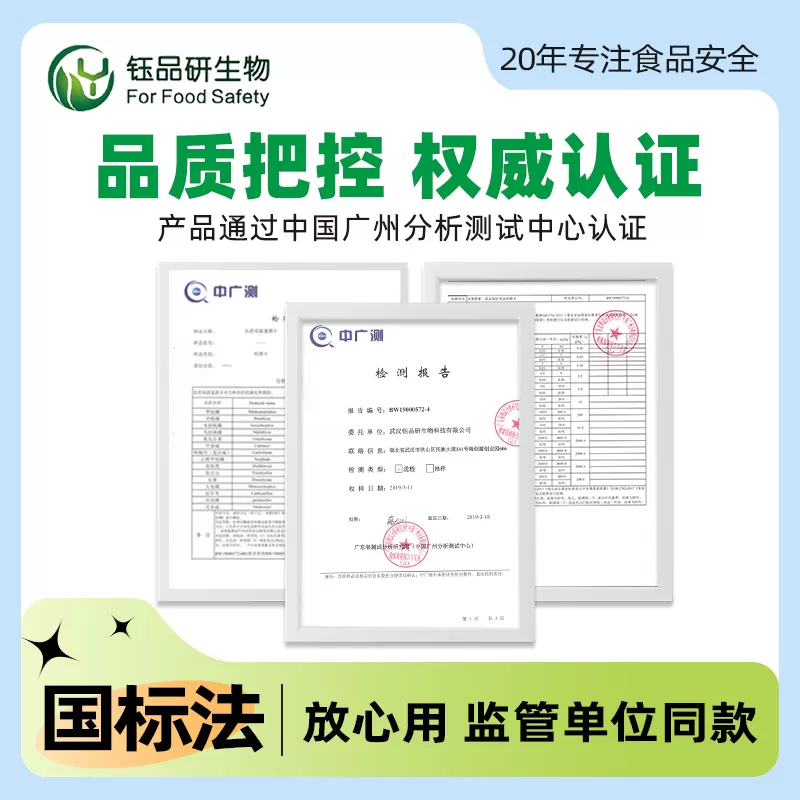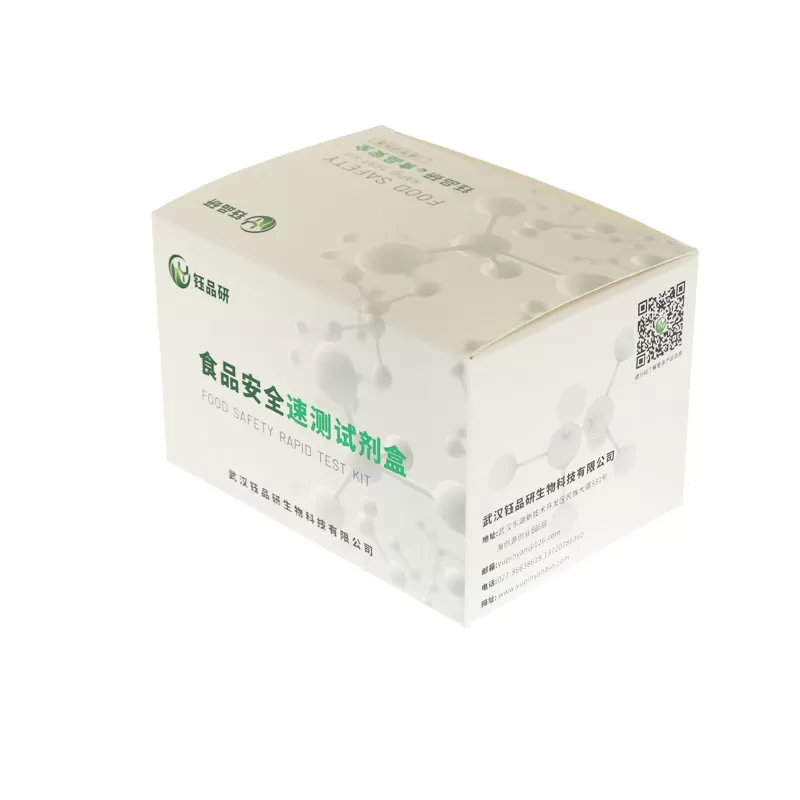![]()
Thiamethione Rapid Detection Card (Colloidal Gold Method) Instructions for Use
1. Summary
Thiamethione is a neonicotinoid insecticide, which mainly acts on the nervous system of insects. It can selectively bind to the nicotinic acetylcholine receptor in insects, block the transmission of nerve signals, and finally kill pests. It has the characteristics of high efficiency, strong internal absorption, long shelf life and high safety.
2. Detection Principle
This product adopts the principle of competitive inhibition immunochromatography. The specific antibody labeled with colloidal gold in the sample binds to the antibody and the antigen on the NC film detection line (T-line), resulting in a change in the color depth of the detection line. Whether the sample contains thiamethione or not, the quality control line (C line) will develop color to show that the detection is valid.
III. Intended Use
Primary screening of fresh vegetable and fruit samples to ensure that the content of thiamethione is not higher than the national standard.
IV. Cross-Reaction and Product Performance
Crossover rate with imidacloprid is about 1.5%, and the cross-crossing rate with thiamethione, amidacloprid, thiamethiazine, and polymycin is less than 0.5%.
Five, the minimum detection limit of the sample
0.01mg/kg (ppm)
Six, the main components
component name
10 parts/box
component name
10 parts/box
thiamide test card
10 parts
pesticide residue general extract
1 bottle
instruction manual
1 parts
1 secondary dropper
10
seven, storage conditions and valid period
original packaging: 4-30 ℃ dry storage, valid period of 12 months.
after opening: test card after opening, please use immediately, do not freeze.
eight, sample requirements
1, to avoid corruption and deterioration of the sample;
2, should avoid large pieces of soil
IX. Test method
Sample pretreatment
1. Take 20-50g of representative sample and chop/cut it up (less than 1 cm square). Weigh 20.05g of the sample in a 50ml centrifuge tube, add 6mL of general-purpose pesticide residue extract, cover it, oscillate with a vortex meter or manually vibrate up and down for 1 minute, and let it stand for 1-2 minutes, which is the sample solution. According to the detection needs, dilute it according to the table below, which is the solution to be tested.
Note: The following limited execution standards are GB2763-2021, GB 2763.1 - 2022
Sample type
GB 2763 Limited (mg/kg)
Detection limit
(mg/kg)
Sample solution (μL) + extract (μL)
Legumes, corn shoots, papaya, pineapple
0. 01
No dilution is required to test
Banana
0. 02
0. 02
200+200
avocado
0. 03
0. 03
100+200
mango, celery
0. 04
0. 04
100+300
Solanaceous vegetables (except tomatoes), artichokes, sugar cane
0. 05
0. 05
100+400
Citrus fruits (except oranges, oranges, oranges), berries and other small fruits (except grapes)
0. 07
0. Root vegetables (except kale After mixing, it is the sample liquid, and then diluted according to the table below, it is the liquid to be tested.
Pure fruit (except pear)
0 4
0 4
100+300
garlic, kale, orange, orange 5
0 5
100+400
grapes
0 7
0 7
100+600
tomatoes, fresh dates
1
1
100+900
leafy vegetables (except celery), pear
2
2
50+950
10, sample testing
1, please complete the follow-up test within ten minutes after the treatment of the tested liquid is completed;
2, please read the product manual carefully before use, and return the sample and product to room temperature;
3, take out the test card, place it flat on the desktop, absorb 80 μL (about 3 drops) of the tested liquid and add it vertically to the sample hole.
4, start timing when the liquid flows, and perform the result judgment after 6-10 minutes, and the other time judgments are invalid.
eleven, interpretation of test results
visual:
negative (not detected): T line color than the C line color dark or as deep;
positive (detected): T line color than the C line light or T no color
invalid: C line does not develop color and regardless of whether the T line color.
instrument interpretation: see the instrument instruction manual
twelve, precautions
1, this product is only for qualitative screening, if you need to confirm, please refer to the relevant national standard method.
2, encounter positive samples recommended repeated verification.
3, pre-test sample processing tools such as knives, scissors, stickers should pay attention to cleaning, to avoid cross contamination.
4, detection temperature should be controlled at 17-30 degrees, too high or too low will affect the test results.
5. Before testing, it is recommended that the sample be fully stirred and mixed (if the sample is less, the representative part should be taken, and then the sample should be weighed), so that the test results can more realistically reflect the actual drug residue of the sample.
6, The test standard liquid solvent is the extract, and the water and organic solvent shall not be used as a negative control.
7, Methanol is generally selected for the standard liquid solvent during the verification of the standard, and the final sample is recommended to be 10-50 μL.
8, the reagent of this product is a disposable product, and the waste after use should be treated as a general chemical.
9, the market-related products are complicated, and the quality and performance of each manufacturer are different. Horizontal comparison with congeneric products is not recommended.
10, the reagents involved in this product are safe and reliable, do not contain carcinogenic, highly toxic, flammable, explosive, strong corrosive reagents, but do not eat.
11, papaya, banana samples contain more fiber interpretation, please follow 10 minutes interpretation, the first step after adding the extract is conditionally recommended 4000rpm centrifugation for 2 minutes, the supernatant is the sample solution
12, pineapple samples contain more organic acids, please follow 6 minutes or so interpretation results, the later color line black does not affect the results.

